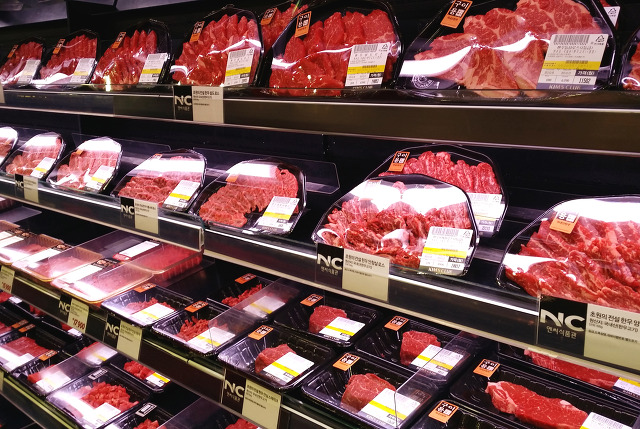
For the past ten years, westernized dietary patterns of Koreans have led to increased consumption of meat, while consumption of grain has decreased. (image: Kobiz Media/ Korea Bizwire)
SEOUL, June 22 (Korea Bizwire) – For the past ten years, westernized dietary patterns of Koreans have led to increased consumption of meat, while consumption of grain has decreased. The average Korean consumes more meat than individuals in neighboring countries including China and Japan, according to the Korea Times.
Based on the ‘Report on a Change in Agricultural and Livestock Products for the Past Ten Years’ published in NH Livestock Economy Focus Journal of the National Agricultural Cooperative Federation’s Livestock Economy Research Center, the average Korean household spent 15 percent of their food expenses on buying meat from 2013 to 2015. Compared to the period from 2003 to 2005, that is a 2.1 percent increase over ten years.
Monthly consumption of meat per person also increased from 2.7 kg in 2005 to 4.0 kg in 2014, and consumption of snacks and fruits increased by 1.6 percent and 1.5 percent, respectively, as well.
The reasons behind the trend of increased meat consumption are that dining out became more common and dietary patterns of Koreans are becoming westernized.
In addition, free trade agreements opened markets for agricultural products including meat and imported fruits such as mango and grapefruit, leading to higher consumption for consumers.
Meanwhile, the consumption of grains and vegetables decreased significantly over the studied period.
Food expenses dedicated to grains went down from 10.6 percent to just 6.1 percent, a decrease of 4.5 percent over ten years. For vegetables and fresh seafood, their share of food budgets dropped by 1.4 percent and 2.1 percent respectively.
As rice, once considered a traditional staple food for Koreans, is consumed less, people consume fewer vegetables, which are often eaten along with rice in side dishes.
“Meat consumption is steadily rising, yet the self-sufficiency rate of beef is declining. We have no choice but to rely on imported meat,” said an official from the National Agricultural Cooperative Federation’s Livestock Economy Research Center. “In order to obtain a stable supply of meat, the production base of livestock products needs to be expanded, and a system for supply and demand must be established,” he added.
By Nonnie Kim (nkim@koreabizwire.com)






